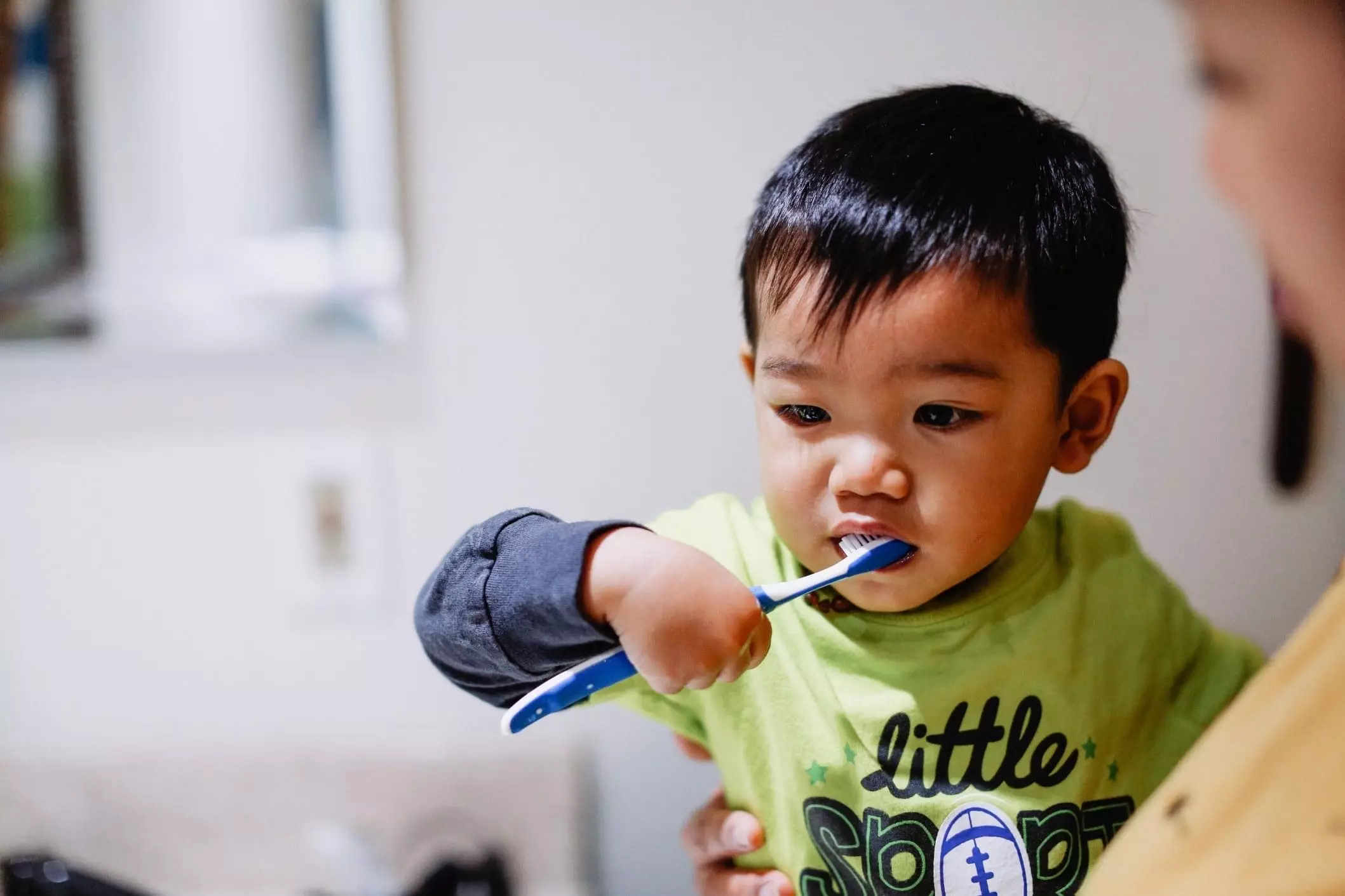As day turns to night, the challenges of parenting can often weigh heavily, particularly when it comes to establishing healthy habits. One such task—getting toddlers to brush their teeth—can feel like an uphill battle, especially when the evening wind-down brings exhaustion. Yet, understanding that this phase is both important and temporarily daunting is key. With a little patience and strategy, you can help your child develop positive dental habits that will benefit them for a lifetime. Here’s how to turn this nightly ritual into an enjoyable routine.
Start Early: Laying the Groundwork
The foundation of good oral hygiene starts much sooner than many parents realize. According to recommendations from dental professionals, it’s advisable to begin a dental care regimen even before teeth appear. This means that cleaning infants’ gums with a soft cloth or a toothbrush should begin at birth. As your child’s first teeth emerge, introducing fluoride toothpaste—just a smear—becomes crucial. It is never too early to foster an environment where dental health is prioritized.
Establish a Routine: The Power of Consistency
In children’s lives, establishing a routine is not just beneficial—it’s vital. Predictability in daily activities gives toddlers a sense of stability and security. Create structured times for brushing teeth, ideally before bed, and follow it up with calming activities like reading a book or telling a bedtime story. This not only builds a habit but reinforces an understanding of dental care as an essential part of their daily life rather than a chore to avoid.
Consider a simple mantra for bedtime—something like “Brush, rinse, and discover dreams,” which prepares them for the comforting sequence of events leading to sleep. That, paired with a clear association of tooth brushing with bedtime, can make both processes smoother.
Fostering autonomy in toddlers is beneficial for their development and their willingness to participate in oral hygiene. Letting children select their toothbrush—whether it features their favorite character or comes in a bright color—gives them a sense of ownership. Furthermore, allowing your child to choose their toothpaste flavor can turn brushing from a mundane task into an exciting event. This pequeño choice fosters pride and ownership, ultimately making them more eager to engage in their dental care routine.
Lead by Example: Making It a Family Activity
One of the most effective ways to encourage children is to let them see adults leading by example. Make tooth brushing a family affair. Brush your teeth alongside your child—engaging in this collective performance makes it feel like a fun, shared responsibility rather than a mundane task. Children often learn better through social imitation; seeing you brush your teeth will reinforce the practice for them.
Moreover, you can integrate playful interactions to amplify enjoyment—such as funny faces in the mirror or synchronized brushing movements—which not only creates a joyous atmosphere but also makes the process memorable.
Independent Practice: Balancing Help and Autonomy
While toddlers may have limited skills, giving them a chance to practice brushing independently can be very empowering. Allow them some time to brush their teeth on their own to develop motor skills and confidence. After a brief period, step in to assist with the proper technique and ensure thorough cleaning. This hybrid of independence and guided regulation not only builds confidence but also enhances their proficiency as they grow.
Children have an affinity for music, which can serve as a powerful tool in establishing positive routines. Using catchy songs or rhymes during teeth brushing can create a festive environment and make the process more engaging. You might create a special “brushing song” that incorporates rhythm and lyrics about cleaning teeth. This approach not only entertains but also helps them remember the importance of brushing.
Positive Reinforcement: Encourage Good Behavior
Rewarding tiny milestones can be incredibly motivating for children. Simple systems, such as sticker charts, can offer a visual representation of their progress and instill a sense of accomplishment. For instance, after a week of successful brushing, a fun outing or a small, anticipated prize might serve as rewards. By focusing on positive reinforcement rather than punishment for missteps, you cultivate a healthy view of dental hygiene.
Avoiding Fear-Based Motivations: Focus on Positivity
While the consequences of poor dental hygiene can be serious, frightening children into compliance isn’t the solution. Instead of using scare tactics about cavities or dental visits, emphasize the joys of having a bright smile and strong teeth. Create engaging narratives around visits to the dentist as an adventure rather than a source of fear.
Creating a positive tooth brushing experience can be an enjoyable journey that fosters deeper connections between you and your child. By instilling a sense of routine, offering choices, leading by example, and integrating fun, you are setting your child up for lifelong dental health. Each small step you take lays the foundation for better habits, ensuring that your child not only brushes but embraces the value of caring for their body. Be patient, stay consistent, and enjoy these precious moments with your little ones during this formative process. Happy brushing!

